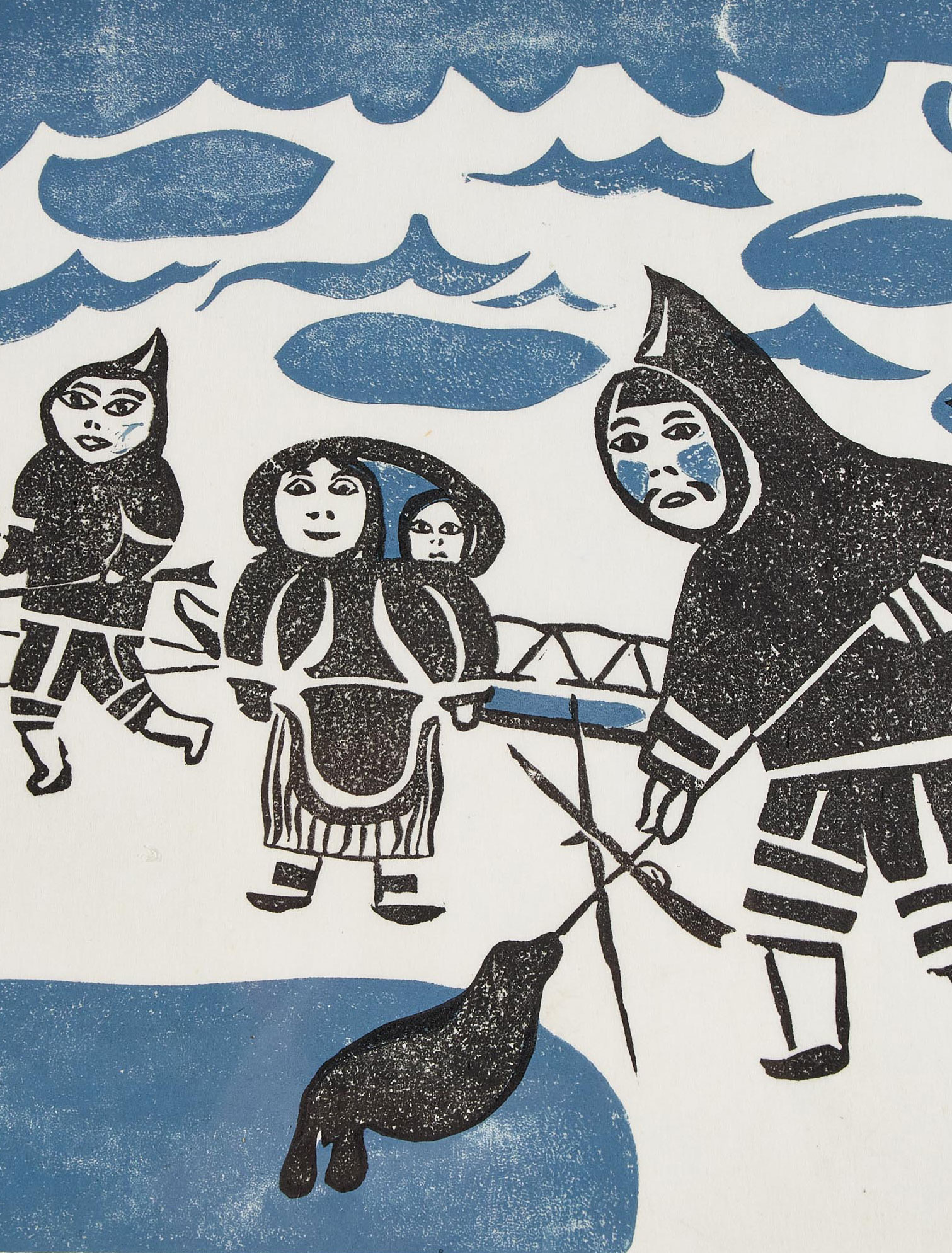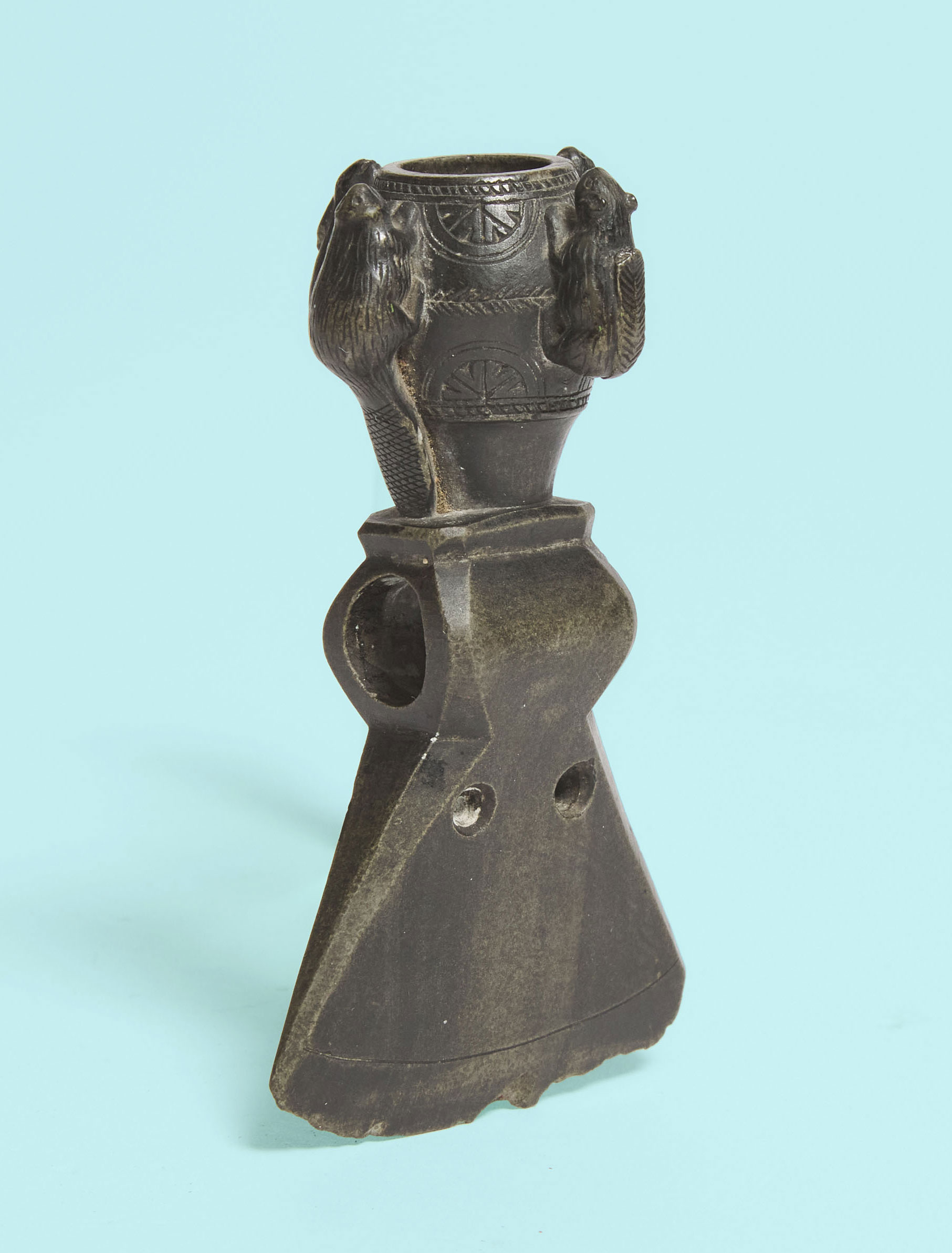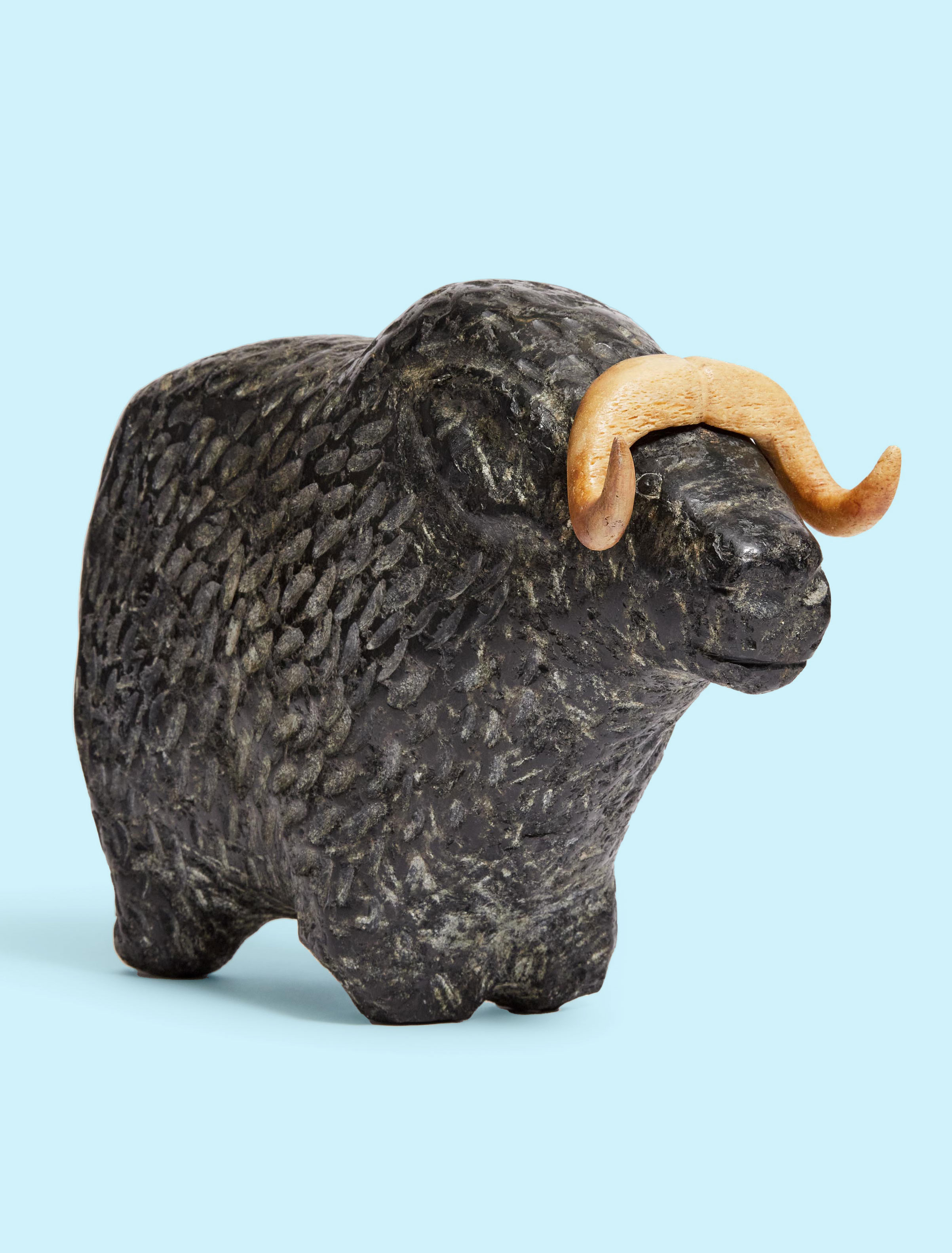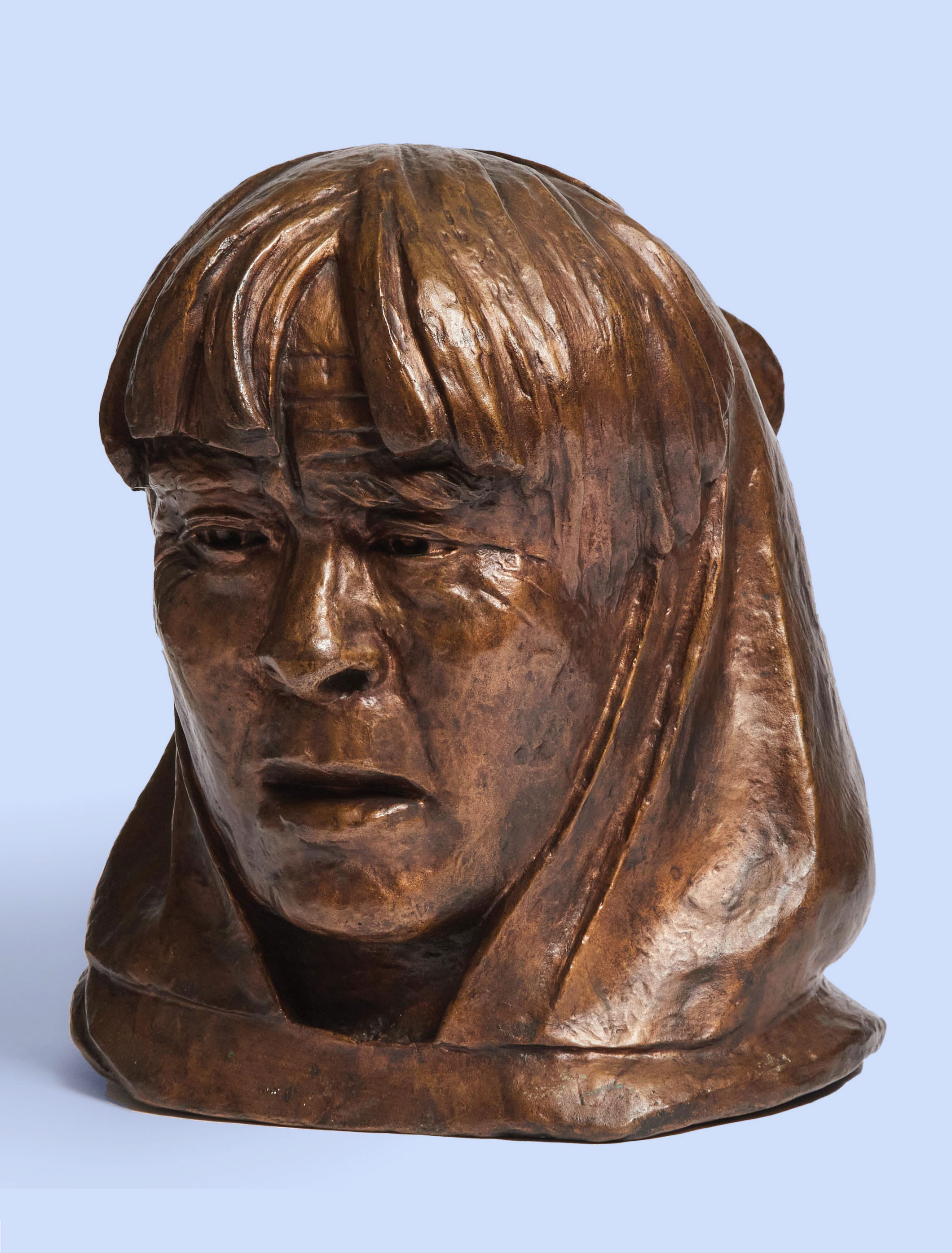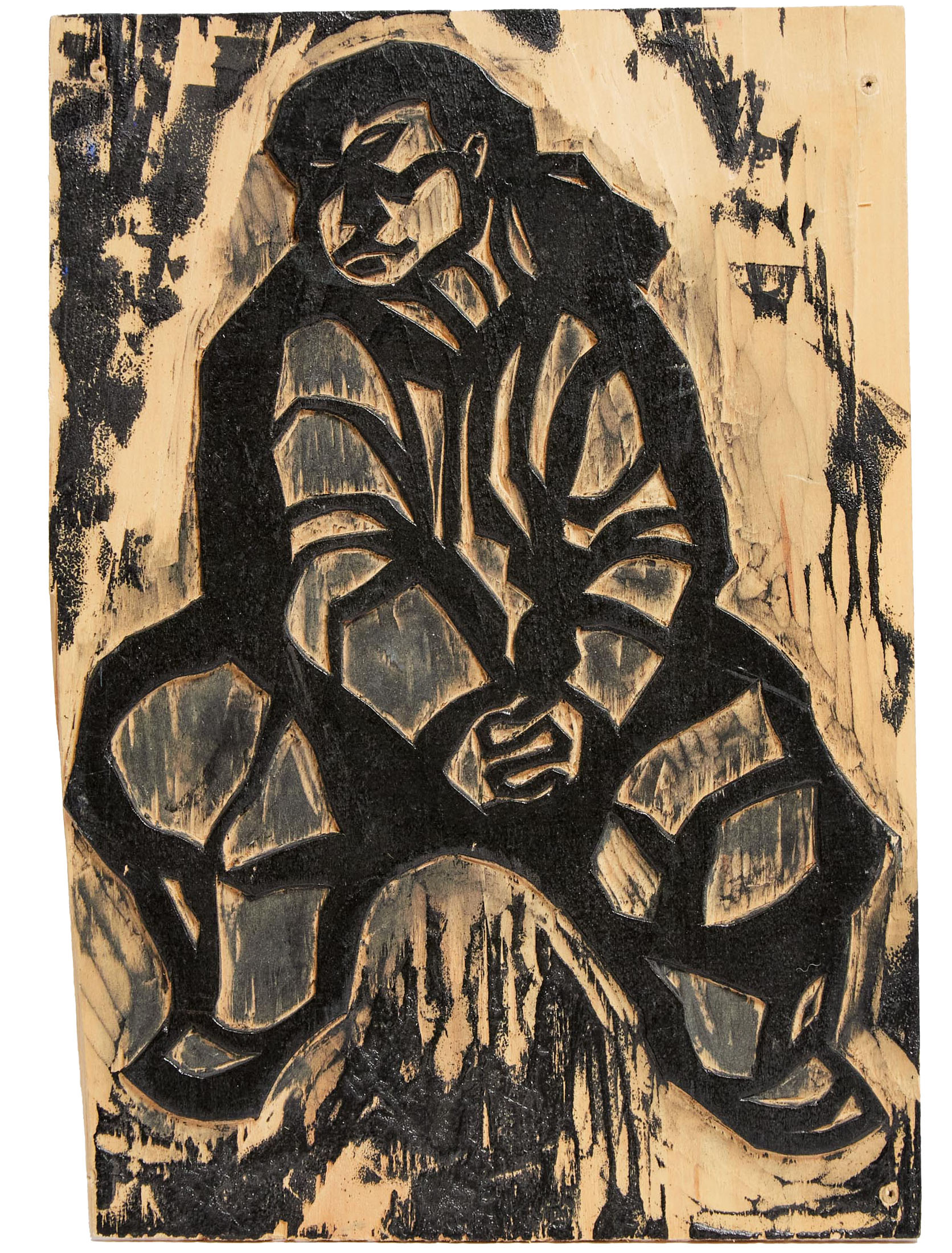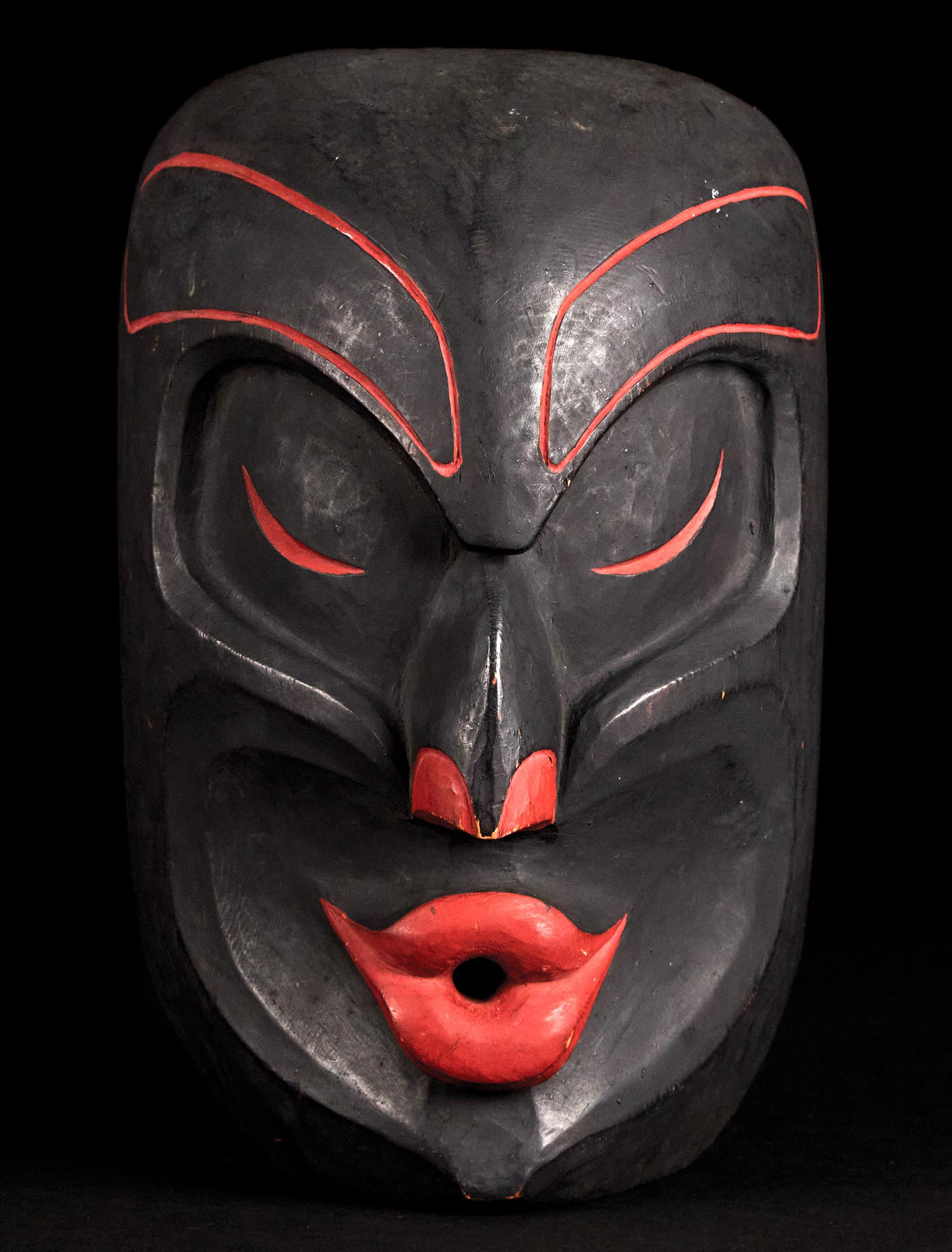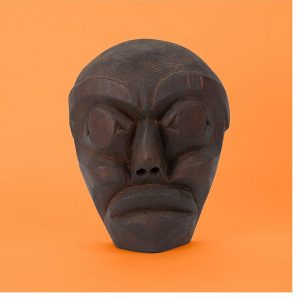
10.4 x 7.7 x 4.7 in — 26.5 x 19.5 x 12 cm
Estimate $1,800-$2,000
The Kwakwaka’wakw peoples (formerly known to many non-Kwakwaka’wakw, as the Kwakiutl) are the traditional Indigenous inhabitants of the coastal areas of northeastern Vancouver Island and adjacent mainland British Columbia, and are especially renowned for their elaborate ceremonial masks. Within this culture, masks are highly prized, serving as powerful representations of ancestral spirits and supernatural entities. The Kwakwaka’wakw believe that their ancestors came to their homeland of northern Vancouver Island in the form of animals, who upon arrival discarded their original forms in order to become human. It is these ancestors who are usually depicted on traditional masks.
Worn in seasonal festivals and Potlatch ceremonies, mask types are not interchangeable between performers. Though different Kwakwaka’wakw Nations have their own unique cosmologies, stories, and ceremonies, each mask and its accompanying dance are reserved for a particular individual or family, representing that group’s specific ancestors. As such, masks would only be passed down or gifted to within family groups, helping to signify a person’s status and rank within the Kwakwaka’wakw society.
When a dancer dons their regalia, it is thought that these supernatural entities temporarily enter the human body and are able to communicate with the earthly realm. Masks can also signify the wearer’s initiation into a secret society, or represent a portrait of a particular person, often deceased.
Generations of Craftsmanship
Masks can take anywhere from months to years to reach completion, and are predominantly carved from red cedar. Red cedar is an important resource for the Northwest Coast peoples, being used in projects as large as architecture and as small as daily objects. Once carved, wooden masks were often painted with plant and mineral-based dyes, and then decorated with additional materials such as straw, feathers and hair.
The style and creation of traditional masks were impacted by contact with European settlers, who introduced Indigenous carvers to metal tools. The Hudson Bay Trading Company established a trading post near Fort Rupert in 1849, bringing foreign fabrics, buttons and other simples to local artisans, who quickly found new and creative uses for them in their traditional artforms. Synthetic paint was also introduced, which allowed for brighter and longer-lasting designs.
Three distinct forms of masks have emerged. The most common is a simple mask without any moving parts. The second is a mask with moving parts, such as eyes or mouths that open or close. The third is referred to as a transformation mask, which is a mask-within-a-mask: the wearer is able to open their mask to reveal another carved face within. These transformation masks would be used to great effect during a performance, with the internal face revealed at the dramatic climax of a dance.
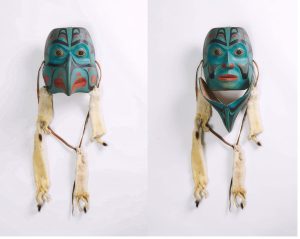
(Sold at Waddington’s October 2020)
HUMAN EAGLE TRANSFORMATION MASK
16 x 8 x 8 in — 40.6 x 20.3 x 20.3 cm
A long history
Northwest Coast masks have been carved for hundreds of years, with historians suggesting that the practice dates back well over a thousand years. Because of their organic origins, these items are subject to decay, which is why most masks in circulation date only to the 19th and 20th centuries.
The rich First Nations carving tradition was nearly wiped out when it came into contact with Western ideologies and institutions. Christian missionaries and the Canadian government viewed Potlatches as an impediment to the economic and religious assimilation of First Nations peoples. The federal government prohibited Potlatch ceremonies, a ban that lasted from 1885 until the 1950s. Masks were confiscated, and traditional carving practices were discouraged. Many of the artifacts that survive only exist because they were placed in museum or private collections, stripped from their creators and their original owners.
Once the Potlatch ban was lifted, a renaissance of carving began. Artists attempted to revive traditions that had nearly been wiped out. The generation of artists who emerged—many from residential schools—to once again pick up their tools found that they had few teachers left. Instead, they were forced to take inspiration from museums and books. Techniques and visual motifs present in the works of 19th and 20th-century master carvers were borrowed and riffed on, injected with new life and new interpretations. The impact of carvers like Mungo Martin, Willie Seaweed, Charlie James, Henry Hunt, Bob Harris, Ellen Neel, and Arthur Shaughnessy cannot be understated. This explosion of creativity helped to reframe Indigenous art in Canada, with collectors finally recognizing it as fine art rather than as “souvenir” objects, another legacy of colonialist policies. These styles have flourished in the work of successive generations of First Nations artists, forming the bedrock of a flourishing contemporary artform and cultural practice.
About the auction:
We are thrilled to be offering an early work by Mungo Martin (1879-1962), a key figure in the continuation and revival of Kwakwaka’wakw culture, in our Waddington’s West auction, online from September 11-16. This auction features an eclectic mix of Northwest Coast, First Nations, Inuit and Canadian art sourced from Western Canadian collections. Highlights include work by Bill Reid, Rufus Moody, Henry Evaluardjuk, Lucy Qinnuayuak, Johnny Inukpuk, Josiah Nuilaalik and Robert Genn. We invite you to browse the full catalogue.
Please note that all artworks are located in Vancouver and shipping from Vancouver is the responsibility of the successful bidders.
Please contact [email protected] for condition reports or to book a preview appointment. Please note that this auction closes at 2 pm ET (11 am PT).
Further reading:
https://katilvik.com/what-is-indigenous-art/
https://nhmu.utah.edu/sites/default/files/attachments/SunMoonMasks.pdf
https://www.mpm.edu/research-collections/artifacts/kwakiutl/kwakiutl-masks
Related News
Meet the Specialist
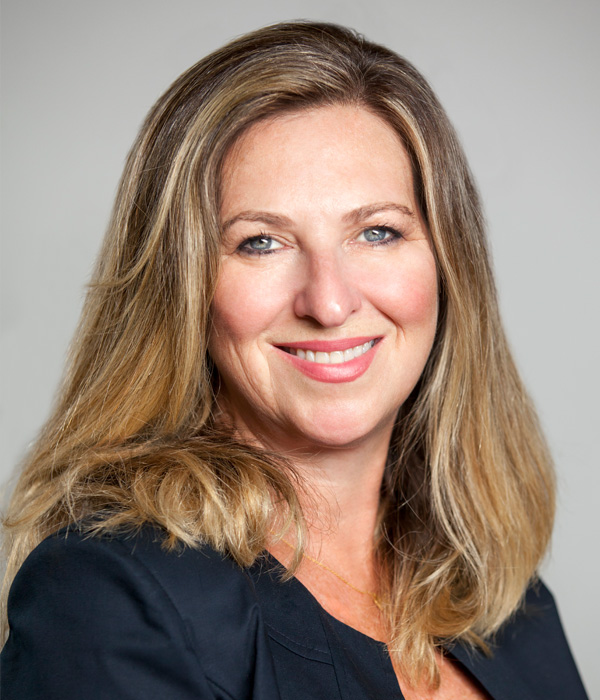
Jacqui de Leeuw
Director
Waddington's Vancouver



